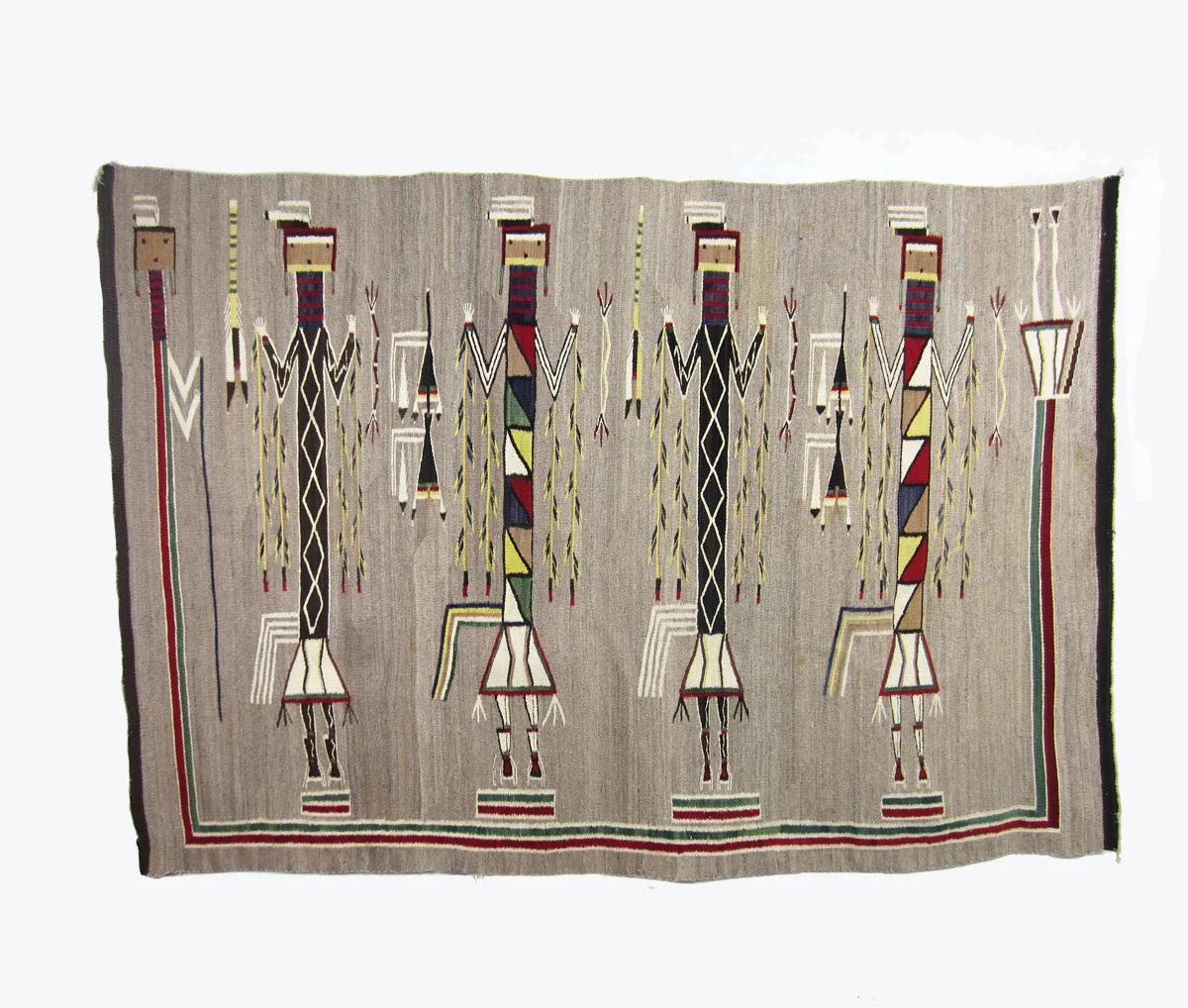Navajo (Dine) Late Classic serape, early 1870s
Navajo (Dine) Late Classic serape, early 1870s
59” wide x 86” long
circa early 1870s
all colors of wool are synthetic dyed, machine spun (commercial 3-ply wool)
excellent condition with minor wear from native use, one small hole and slight fading on one side (illustrated in photo showing a folded-over edge to compare sides)
ex: Private Collection
Price on Request
(mc2234)
In 1863, the US Army, led by Kit Carson, rounded up the Navajo and forced them onto what is known as “The Long Walk” to a camp known as Bosque Redondo. Conditions were very harsh with bitter cold and limited supplies being made available to the Navajo. Unfortunately, the Army had also decided to kill the Navajo’s churro sheep (which were perfectly suited to the arid climate of the Southwest). The Navajo were thus dependent on the Army to provide enough wool in order for them to weave their own blankets in an effort to stave off the cold.
The type of wools and dyes used in this Navajo serape, as well as the design elements, clearly help identify the blanket as having been woven either at the time of Bosque Redondo or just after their release in 1868.
Blankets of this era rarely have borders but this blanket has a blue border at the top and the bottom. There are only 4 known blankets from this period that had borders.
The serape is very well woven and in remarkable condition, given its long and important history. It is also quite beautiful.














